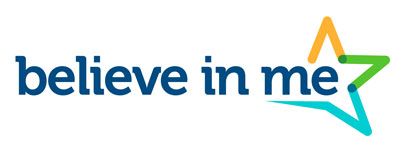Marginalized youth face a labyrinth of challenges that extend far beyond the classroom or their neighborhood streets. Deep-seated social inequality, institutional neglect, and systemic barriers create an environment where many young people struggle to have their voices heard. Yet, in the midst of adversity, youth continue to harness resilience, determination, and creativity to demand change. In this post, we examine the multifaceted challenges of marginalized youth, drawing on research from sources like NCBI and the World Bank Blogs, while also showcasing how Believe in Me is actively involved in turning obstacles into opportunities.
A few burning questions that frequently pop up in online searches include: “What challenges do marginalized youth face?”, “How does social inequality impact youth adversity?”, “What programs exist to support marginalized youth?”, and “How can community efforts foster change?” We’re here to answer these and more, providing a clear picture of the obstacles as well as the pathways to empowerment.
Geared towards community leaders, policymakers, and social workers, this article not only details the challenges but also highlights actionable strategies to help bridge the gap and create opportunities for marginalized youth.
Overview: Empowering Youth Amid Social Inequality
Marginalized youth often find themselves at the crossroads of systemic neglect and social exclusion. Factors such as poverty, limited access to quality education, and discrimination based on race, gender, or socioeconomic status all play a critical role in defining their daily struggles. These intertwined challenges create hurdles that can stifle their potential and limit future opportunities.
However, a growing number of advocacy programs aim to turn the tide. Organizations like Believe in Me are bridging the gap by providing safe spaces, resources, and leadership training tailored to the unique experiences of marginalized youth. This approach is informed by rigorous research and real-world success stories, which not only validate these challenges but also highlight the systemic changes that can uplift vulnerable populations.
According to the publication Marginalized Youth: An Overview from NCBI and discussions on the Challenges Facing Marginalized Youth by the World Bank Blogs, it’s clear that the intersection of social inequality and youth adversity is complex and multifaceted (NCBI, 2025; World Bank, 2025).
Frequently Asked Questions Addressed
- What challenges do marginalized youth face?
They encounter limited access to education, inadequate healthcare, discrimination, socio-economic hurdles, and systemic neglect that often results in compounded disadvantages. - In what ways does social inequality impact youth adversity?
Social inequality creates a stratified society where marginalized youth are more vulnerable to adverse outcomes, whether it be in employment, mental health, or civic engagement. - What programs support marginalized youth?
Many initiatives, including those by Believe in Me, provide mentoring, advocacy training, and community engagement programs to empower these young individuals. - How can community efforts foster change?
Through inclusive policy-making, volunteerism, and strategic partnerships, communities can work together to dismantle systemic barriers facing marginalized youth.
Case Studies of Successful Youth Programs
Amidst the challenges, success stories from youth programs provide hope and tangible evidence that change is possible. Believe in Me has been at the forefront of these transformative efforts, tailoring programs that address the specific needs of marginalized youth and equipping them with tools for success.
Case Study 1: iLevelUP: Empowerment Through Education Initiative
The iLevelUP App, spearheaded by Believe in Me, is a beacon of hope for marginalized youth burdened by systemic educational disparities. This program partners with schools in underserved communities to provide and app that assists with personal and professional development, career exploration, major selection, college matching and applications, scholarship matching and applications, extracurricular guidance, career readiness, and academic support. One standout success story is that of Carlos, a bright student whose grades and self-esteem soared after using the app. Through ai-driven animated mentors and tailored learning plans, Carlos was transformed from a disengaged student into a passionate advocate for educational reform.
This initiative effectively demonstrates that when marginalized youth receive targeted support, the results can ripple outwards, catalyzing broader community impacts and opening doors to further opportunities.
Case Study 2: The Cougs 4 Kids Summer Camp
Another impactful example is the Cougs 4 Kids Summer Camp implemented by Believe in Me, which focuses on building essential life skills and civic engagement among marginalized communities. This program involves transporting youth from marginalized communities to the Washington State University campus to participate in interactive workshops where youth address issues such as mental health stigmas, inequality, and access to social services. One participant, Aisha, used the tools she gained from the program to launch a local advocacy campaign that led to increased funding for accessible mental health services in her community.
Programs like these are crucial—not only do they mitigate the day-to-day challenges of marginalized youth, but they also empower these young people to become change agents in their own communities. By nurturing leadership and resilience, Believe in Me sets a precedent for how targeted interventions can reverse systemic inequities.
The Role of Understanding Marginalized Youth in the Community
A nuanced understanding of the challenges faced by marginalized youth is essential for effective community development. When community leaders, social workers, and policymakers are aware of the obstacles—like discrimination, economic hardship, and limited support systems—they can better tailor interventions that promote equity and inclusion.
Initiatives like those spearheaded by Believe in Me are key in fostering an environment where marginalized youth are not only heard but are actively included in decision-making processes. This level of engagement ensures that policies are not only reflective of their unique experiences but that they also address the root causes of youth adversity.
The benefits of such inclusive community strategies are clear: they lead to more resilient communities, improved mental health outcomes, and a bridging of the gap between policy and practice. Informed, empowered youth can transform community norms and become the catalysts for systemic change.
Actionable Ways to Get Involved
If the challenges described resonate with you, and you feel compelled to help bridge the gap for marginalized youth, here are several practical steps to engage:
- Participate in Mentorship Programs: Join initiatives like those offered by Believe in Me to mentor youth in underserved communities. Mentorship can provide guidance and open doors to opportunities otherwise inaccessible.
- Advocate for Inclusive Policies: Use your voice at community board meetings or local councils to push for policies that address social inequality and youth adversity. Advocacy is an essential catalyst for long-term systemic change.
- Volunteer Locally: Community centers and non-profits often need additional support. Volunteering can give you firsthand insight into the daily challenges marginalized youth encounter, and you can contribute directly to alleviating those struggles.
- Support and Share Success Stories: Spread the word about successful programs and initiatives like Believe in Me’s Empowerment Through Education Initiative and Community Resilience Program. Sharing these stories can inspire others and mobilize community action.
- Educate Yourself and Others: Stay informed through credible sources like the NCBI and World Bank Blogs. Understanding the research behind youth adversity will help you advocate for evidence-based solutions.
By taking one or more of these steps, you become not only a supporter but also a proactive agent in the journey toward social justice and resilience for marginalized youth.
Conclusion: A Call for Empathy and Action
Understanding the challenges faced by marginalized youth is the first step toward meaningful change. Social inequality and youth adversity are not insurmountable obstacles when communities come together to support, empower, and elevate the voices of those often overlooked.
Through comprehensive programs, like those implemented by Believe in Me, and through the support of policymakers, social workers, and community leaders, transformative change is not only possible—it’s happening now. We must listen, learn, and act.
When you join hands with organizations that prioritize inclusivity and empowerment, you help shape a future where all youth have the opportunity to succeed. Let’s work together, share knowledge, and take action to ensure every young person’s potential is realized.
Citations: NCBI, 2025; World Bank, 2025.
Get to know more about Believe in Me and Help a Kid Today
References
NCBI, 2025; World Bank, 2025.






